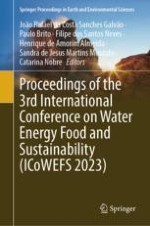This book presents some of the work presented at the 3rd International Conference on Water Energy Food and Sustainability—ICoWEFS 2023, with topics delving into critical global themes. Encompassing four pivotal domains—Water and Circular Economy, Energy, Agrifood, and Sustainability—this book covers cutting-edge research and innovative solutions. Within the ambit of Water and Circular Economy, the discussions span from the sustainable management of water resources, urban and industrial water consumption, to the challenges in governance and the impact of climate change. The Energy section covers chapters on energy production, urban and industrial systems, governance challenges, and the imperative transition toward circular economies. The Agrifood domain probes into sustainable agricultural practices, harnessing smart technologies in farming, climate change's effect on food production, and innovations in food processing. Lastly, the Sustainability segment encompasses a wide array of topics including bioeconomy sustainability, cyber-physical systems, climate change impacts, and resource efficiency, underpinning the urgent need for a holistic approach to global sustainability.
